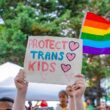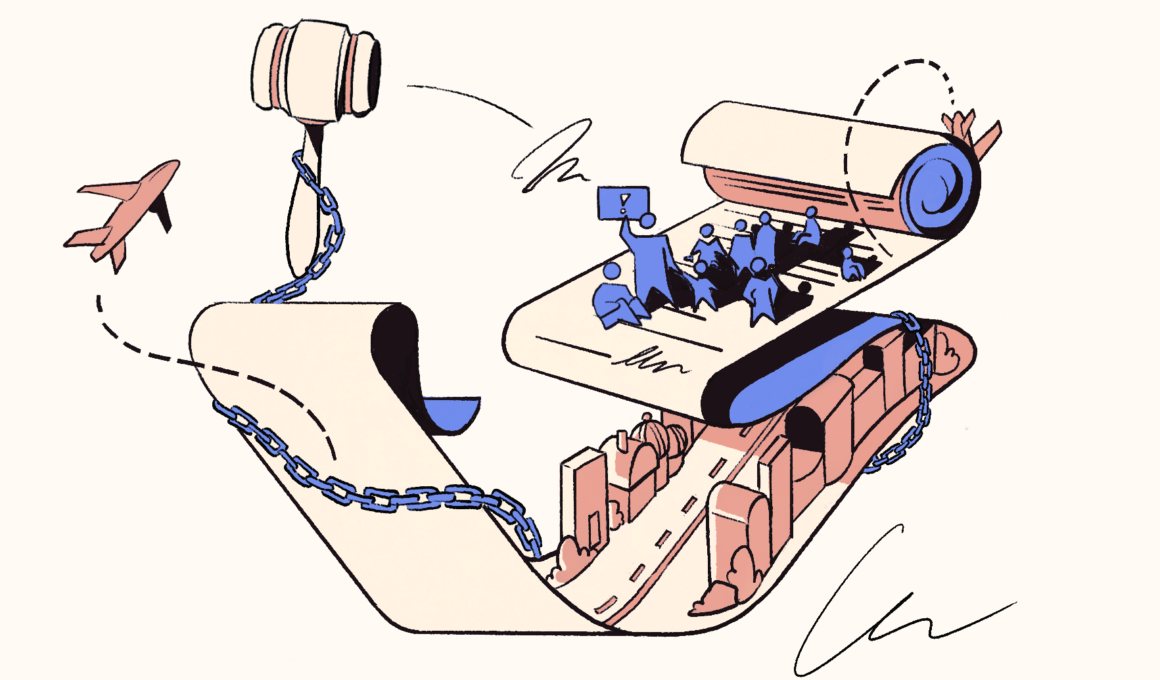EDITOR'S NOTE
This story was made possible by a grant from the Solutions Journalism Network’s Advancing Democracy Initiative. Please take a few minutes to share anonymous feedback with The Yappie and support our work by making a donation.
ON AUGUST 6, 2020, Kao Saelee was looking forward to finally being released after serving 22 years in state prison. It was a hot summer day, and his sister, Julie Saelee, waited outside in the parking lot.
But as the day went on, she saw no sign of her brother. Prison staff gave her multiple vague answers before she learned that the California Department of Corrections and Rehabilitation (CDCR) had arranged for Saelee to be transferred to U.S. Immigrations and Customs Enforcement (ICE) custody in Louisiana. He was facing deportation to Laos, a country their family escaped as refugees when he was just two years old.
Because of a 1996 federal law that allows the deportation of immigrants convicted of certain crimes—and a loophole in California’s “sanctuary state” law that allows CDCR to cooperate with ICE—Saelee not only remained detained, but faced the new threat of deportation with almost no legal recourse.
Convicted of robbery as a teenager, he had served out his sentence and even helped fight California wildfires as an incarcerated firefighter in 2018. But that day, he was one of 3,200 immigrants transferred from CDCR to ICE in 2020—and one of thousands of prior convicts facing deportation nationwide in what activists have called an unjust “double punishment.”
As his sister got in touch with an attorney from the Asian Law Caucus (ALC) in the very parking lot where she had planned to pick him up, Saelee became the latest individual to join a decade-long fight to protect refugees from constantly evolving ICE tactics.
A history of marginalization and resilience
In the three decades after the Vietnam War ended in 1975, over 1.1 million Southeast Asian civilians fled to the United States as refugees, according to a 2020 report from the Southeast Asia Resource Action Center (SEARAC).
Handled by voluntary organizations working with the U.S. State Department, they were often resettled in under-resourced neighborhoods with widespread gang violence, failing school systems, and underlying racial tensions. Race-based violence and a lack of cultural, language, and mental health support often pushed Southeast Asian teenagers into gangs for protection, creating a school-to-prison pipeline through which many Southeast Asian teenagers were incarcerated before even reaching adulthood.
In 1996, another threat targeting immigrants appeared after then-President Bill Clinton signed the Illegal Immigration Reform and Immigrant Responsibility Act (IIRAIRA), dramatically expanding the circumstances under which a legal immigrant could be deported without the chance to argue their case before a judge.
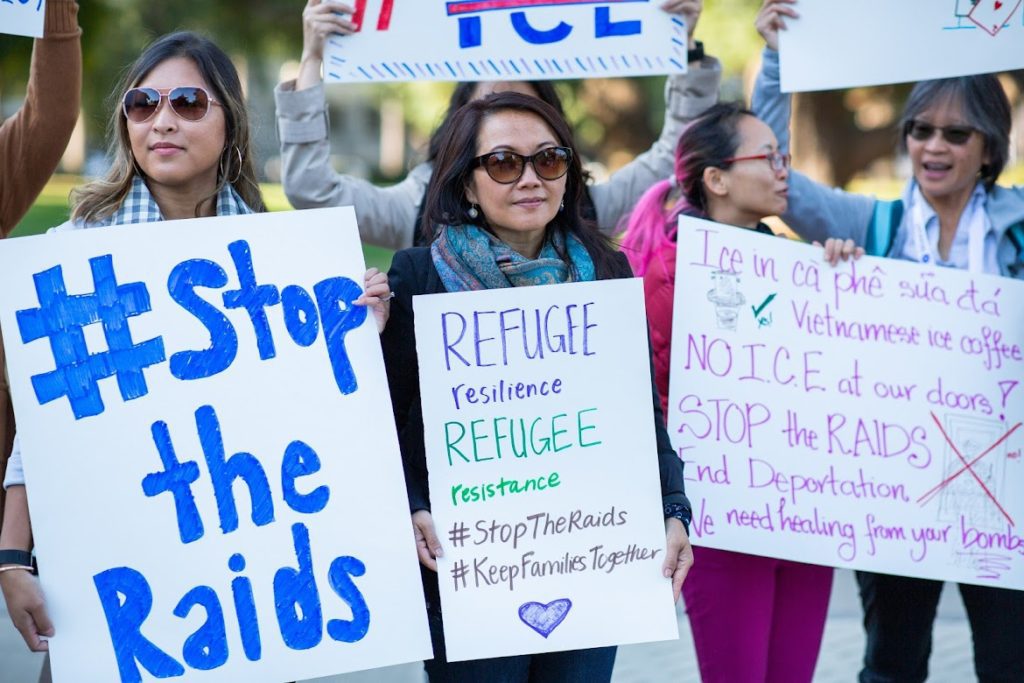

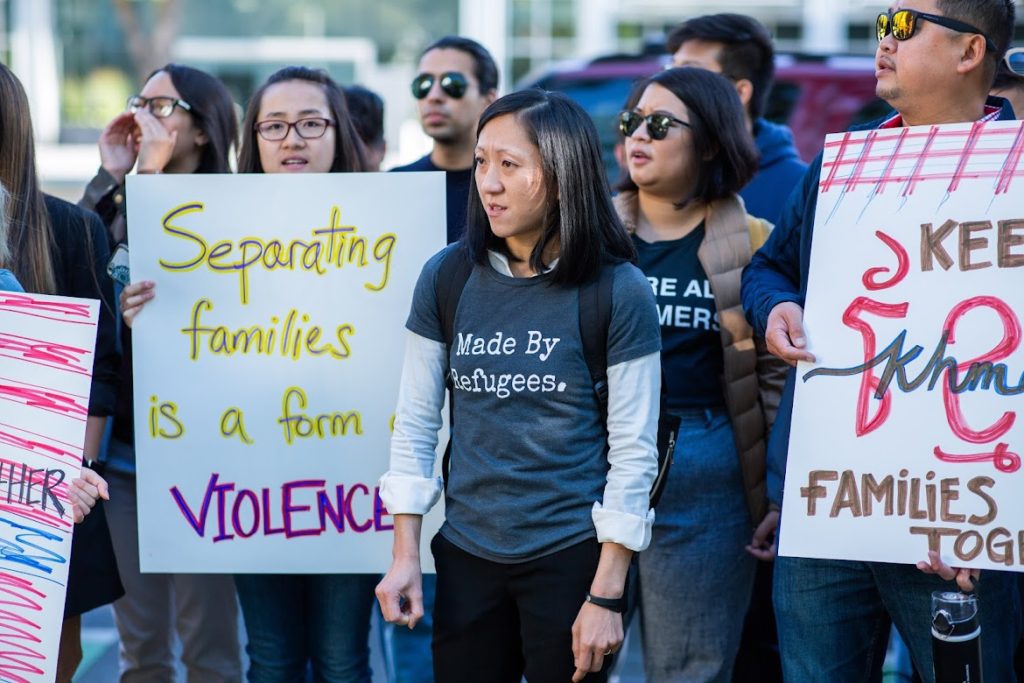

“IIRAIRA made deportation virtually mandatory for people who have certain criminal convictions, even if you’re a refugee or permanent resident,” said Anoop Prasad, the ALC attorney who represented Saelee.
From 1996 to 2019, the number of deportations from the U.S. skyrocketed, climbing from roughly 60,000 to 360,000 over the course of two decades as the school-to-prison pipeline expanded to become a school-to-prison-to-deportation pipeline.
Saelee was one of its victims. After a childhood of bullying from white classmates, Saelee was kicked out by his father when he was 18. Facing drug addiction and homelessness, he participated in an armed robbery at 19. He was arrested and, without adequate language or legal support, handed a 25-year sentence.
Once in ICE detention, Saelee faced few legal options for preventing his deportation under federal immigration law—so instead lawyers and activists focused on “the role of the state, California specifically, in the deportation process,” Prasad said.
In September 2020, the Asian Law Caucus and other partner organizations launched a phone, letter-writing, and social media campaign with the hashtag #FreeSaelee urging California Gov. Gavin Newsom (D)—who had declared California a “sanctuary to all who seek it” in his 2019 inaugural address—to pardon Saelee.
The campaign gained widespread attention after The Guardian covered Saelee’s story, and in October, the ALC delivered a petition to pardon Saelee to Newsom with over 168,000 signatures.
They were kept waiting for several months as they continued to spread the word about Saelee’s plight, uncertain about the likelihood of a pardon. But seven months later, their work came to fruition: Newsom pardoned Saelee in May 2021, removing the threat of deportation.
“I cannot express how grateful I am to have received a pardon and to finally be safe from the threat of deportation and permanent separation from my family,” Saelee said in a joint statement with ALC. “The past ten months in ICE detention in Louisiana have been incredibly difficult. California is the only home I have ever known and I hope the state chooses to stop turning over its residents to ICE so that no one else will have to go through this.”
From 1996 to 2019, the number of deportations from the U.S. skyrocketed, climbing from roughly 60,000 to 360,000 over the course of two decades.
Elevating impacted community member’s stories
In 2019, amid similar social media organizing, phone banking, and a petition with nearly 10,000 signatures, Newsom pardoned Hay Hov and Kang Hen, two Cambodian refugees who were represented by ALC.
In May 2021, the Democratic governor also pardoned Bounchan Keola, another Laotian refugee and formerly incarcerated firefighter represented by Prasad. Keola had been transferred to ICE custody on his release date, just two weeks after a firefighting accident almost killed him and left him in a neck brace. His pardon came after The Guardian published a piece on his story, causing social media to light up with the #FreeKeola hashtag in November 2020.
In April 2022, a similar ALC-led social media, email, and call campaign successfully prevented CDCR from transferring Cambodian refugee Vithea Yung, who was paralyzed after a 2017 injury while incarcerated, to ICE. ALC’s ongoing #ProtectPhoeun campaign aims to do the same for Cambodian refugee Phoeun You.
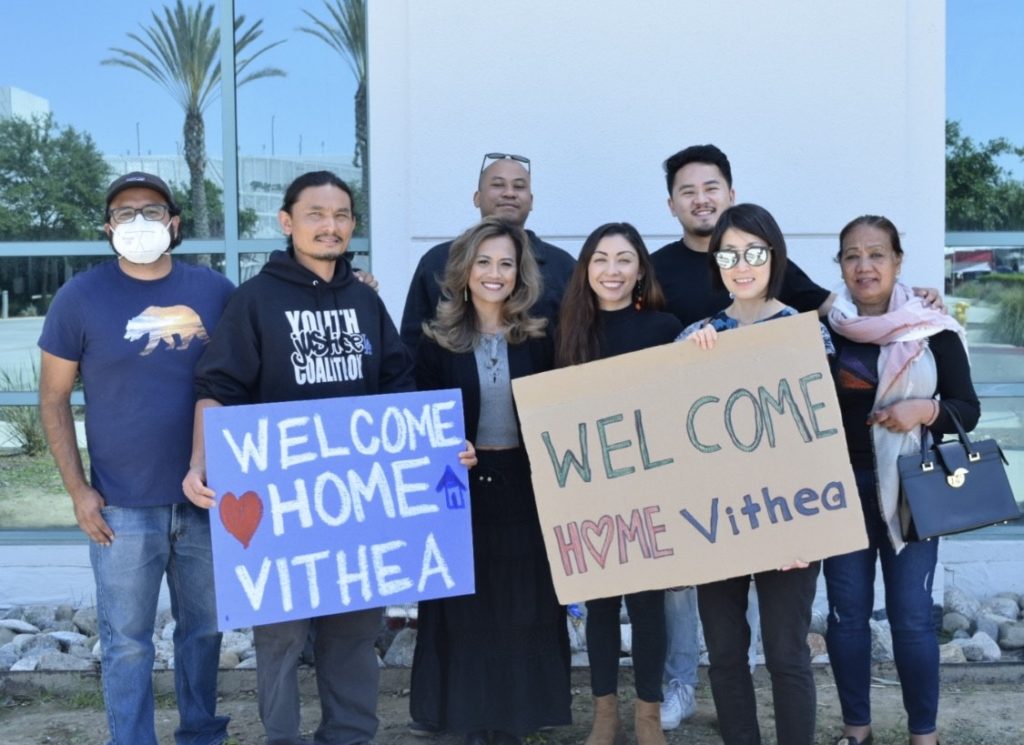

This campaigning strategy has worked—but the cases that result in pardons are ultimately only a tiny fraction of the thousands of immigrants whom California prisons transfer to ICE each year. Most don’t want their stories widely shared, Prasad told The Yappie.
“For the vast majority of the people we talk to, there aren’t public advocacy campaigns,” he said. “There’s a lot of remorse and shame and regret for a lot of folks in prison around harm they might have caused.”
Even for those willing to share their stories, success isn’t guaranteed. Tien Pham, a Vietnamese refugee whom Prasad represented, was transferred from the San Quentin Prison to ICE detention on his June 2021 release date. Despite similar campaigns led by the ALC and VietRISE, Pham was deported to Vietnam with 32 other Vietnamese Americans on March 15, 2021.
Phi Pham, who was born in a refugee camp and had never set foot in Vietnam, was also ordered to be deported to the country in August 2021. Pham was released after ICE was unable to obtain travel documents from Vietnam, but without a pardon, the threat of deportation still hangs over his head.
ICE Out of California
Nationwide, more than 13,000 Laotian, Cambodian, and Vietnamese refugees face deportation orders—far too many to all be individually pardoned.
That’s why activists have pursued a second strategy for protecting incarcerated and formerly incarcerated refugees: preventing law enforcement agencies from handing prisoners over to ICE in the first place. “Nothing in California law” requires them to make that kind of transfer, Prasad said.
The “ICE out of CA” coalition, which counts the ALC, the California Immigrant Policy Center and the National Day Laborer Organizing Network among its member organizations, has led the fight against ICE cooperation with local and state law enforcement since 2011.
It began with specific ICE practices.
The coalition formed in 2011 when San Francisco activists mobilized in opposition to a federal program that gave ICE access to all fingerprints taken by local law enforcement agencies.
When then-San Francisco Sheriff Mike Hennessey requested that ICE stop the practice in the county, he was told it wouldn’t be possible due to an ICE agreement with the then-state Attorney General Jerry Brown—so the coalition took the fight to the California legislature, Angela Chan, the ALC’s former policy director, told The Yappie.
In 2011, ICE out of CA brought to the floor a bill called the TRUST Act, which would allow individual counties to opt out of the program. In July, though, U.S. Secretary of Homeland Security Janet Napolitano announced that no county would have the choice to opt out, effectively killing the bill.
The following year, the coalition introduced a revised version of the bill, which narrowed in on banning ICE hold requests. These requests allowed ICE to notify local jails to hold inmates for 48 hours beyond their scheduled release date so an immigration arrest could be made.
John Morton, the director of ICE at the time, called then-Gov. Brown directly to lobby against the bill. Brown later vetoed it. Coalition members learned of these calls and obtained proof from the sheriff's department through public record requests, Chan said.
In 2013, Brown signed into law a re-introduced TRUST Act with the same content as the 2012 revision. A 2014 Oregon court ruling affirmed the legal foundation for the bill, declaring that ICE hold requests were not legally binding whatsoever. ICE responded by changing their tactics, Chan said. Foregoing hold requests, the agency instead asked prisons directly for the date and time that inmates would be released so ICE could take them into custody.
In response, California passed the ICE out of CA-backed TRUTH Act in 2016, requiring local law enforcement agencies to provide individuals with written consent forms prior to ICE interviews, notify individuals if ICE was provided their release date and time, and require all jurisdictions that cooperated with ICE to host annual community forums about the issue.
Towards a sanctuary state
Donald Trump’s election on a platform of anti-immigrant rhetoric pushed California activists and lawmakers to a new level in November 2016.
In December that year, state Sen. Kevin de Leon (D) introduced the California VALUES Act. The measure moved beyond targeting specific practices to serve as a blanket ban against the use of state or local resources in aiding ICE deportations.
The California Assembly passed the bill 51-26 in September the next year. The Senate followed 27-11 the same month, and Brown signed the bill into law on Oct. 5, 2017.
In the first five months after the law went into effect, ICE arrests at local jails dropped 41%, according to an ALC and University of Oxford analysis.
However, rollout of the law was inconsistent and loopholes abounded. In March 2019, 40% of California’s local law enforcement agencies remained out of compliance with the law, according to the same study.
One particularly exploited loophole was the fact that ICE could access release date information if law enforcement agencies made it publicly available. Of the state’s 58 sheriff's departments, 24 simply started sharing inmates’ personal information and release dates, the analysis found.
Due to an amendment that came after law enforcement lobbying, another major gap was that the law’s protections did not apply to immigrants in state prisons because of an exception made for any individual who “has been convicted of a felony punishable by imprisonment in the state prison.”
This meant it provided no protection whatsoever for Saelee, Keola, or the thousands of other Southeast Asian immigrants in state prisons.
Nationwide, more than 13,000 Laotian, Cambodian, and Vietnamese refugees face deportation orders—far too many to all be individually pardoned.
Completing the vision
Attention around refugees incarcerated in state prisons gave activists the momentum they needed to advance a final piece of legislation patching the loopholes in California sanctuary law.
In February 2021, California Assemblymember Wendy Carrillo (D) introduced the Voiding Inequality and Seeking Inclusion for Our Immigrant Neighbors Act, also known as the VISION Act.
Like the VALUES Act, the VISION Act seeks to “prohibit any state or local agency” from assisting with immigration enforcement. It would repeal previous exceptions that allowed cooperation in cases involving those incarcerated in state prisons, or whose information is already public.
The bill, which by 2021 had 25 legislative co-authors and over 50 organizational co-sponsors, passed an Assembly floor vote in June 2021. It did not get a vote on the state Senate floor during the 2021 legislative session, but will continue moving through the legislative process this year.
If the bill had been in effect when Saelee and Keola had been released, neither would have been directly transferred to ICE. Activists hope it will end California’s prison-to-deportation pipeline and prevent thousands of cases like Saelee and Keola’s in the future.
With only abstract stories, activists had struggled to move lawmakers, Chan said, citing the lack of state prisoner voices as one reason the California VALUES Act did not extend protection to state prisoners. She credits Saelee, Keola, and other refugees with driving a change in the popular narrative about formerly incarcerated immigrants.
“Only when [Saelee and Keola’s family members] were able to share their stories [did elected officials] realize that these are not people we should throw away,” Chan said. “These are people who are amazing, who have survived and are resilient despite multi-generations of trauma that most of us probably can’t even imagine surviving.”
In September 2021, Saelee and Keola wrote an op-ed urging Newsom to pardon Phi Pham and calling on the California legislature to pass the VISION Act.
“We had both turned our lives around in prison and served on the front lines of wildfire season … [but] our own transformation and contributions to defending California were overlooked,” Saelee and Keola said. “If our elected officials pardon Phi Pham and sign the VISION Act, they’ll help build a safer, more compassionate society where all families, including families like ours, can thrive.”
Mobilization around the VALUES Act has also “brought out a new generation of activism and organizers” who push back against xenophobic narratives, said Allison Vo, a youth organizing coordinator with VietRISE.
“People showed up to defend sanctuary [policies] from Westminster to Fountain Valley to Irvine. It was really significant [for the] Westminster City Council to see Vietnamese people showing up and holding them accountable for weaponizing and politicizing the Vietnamese refugee identity in order to justify the good versus bad immigrant narrative,” she said.
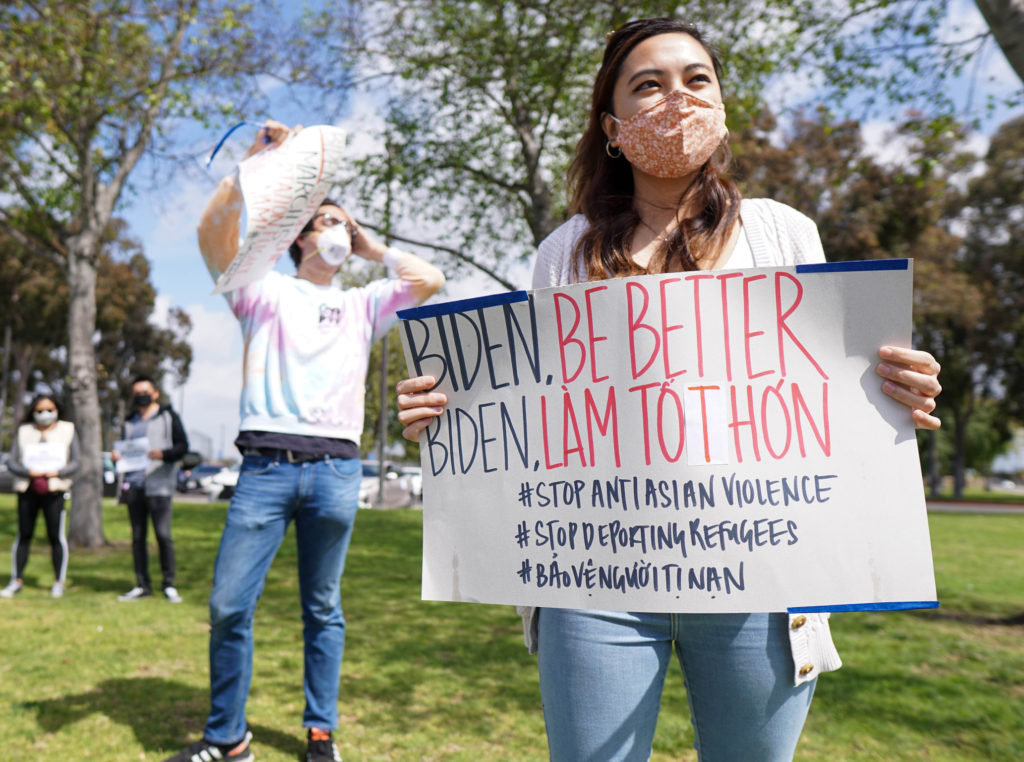

Digital outreach has been a particular focus in ALC’s strategy, Sarah Lee, an ALC community advocate, told The Yappie. The campaign’s toolkit also includes meetings, phone calls and emails, tweet storms, online educational panels, and videos of community members sharing why they care about the VISION Act.
VietRISE, a Vietnamese American advocacy organization based in historically conservative Orange County, has hosted workshops to write letters to elected officials, created petitions, and published op-eds to uplift campaigns and stories of impacted community members they work with.
Meanwhile, groups like SEARAC provide activists with data on Southeast Asian deportations, calculated ICE annual reports, and immigration court records.
The strongest opposition to the VISION Act has come from police interest groups. In August, Chris Catren, vice president of the California Police Chiefs Association, argued that the bill would endanger community members and prevent police from working with federal agencies on anti-human trafficking and terrorist task forces.
In response, Carillo published an open letter calling Catren’s claims “inaccurate and incendiary.” The letter pointed out that the bill only protects prisoners who have already earned their release and only prevents police from working with federal agencies when the primary purpose of collaboration is for immigration enforcement.
Though the Peace Officers Research Association of California and the California State Sheriff's Association joined Catren in lobbying against the bill, supporters of the bill are optimistic about its chances of passing next year.
“I feel hopeful about the work that we're doing holding elected officials accountable. [We’ve really helped] people understand that this is what the community wants. That’s what’s going to move the governor to move legislation,” Ny Nourn, co-director of the Asian Prisoner Support Committee (APSC) told The Yappie.
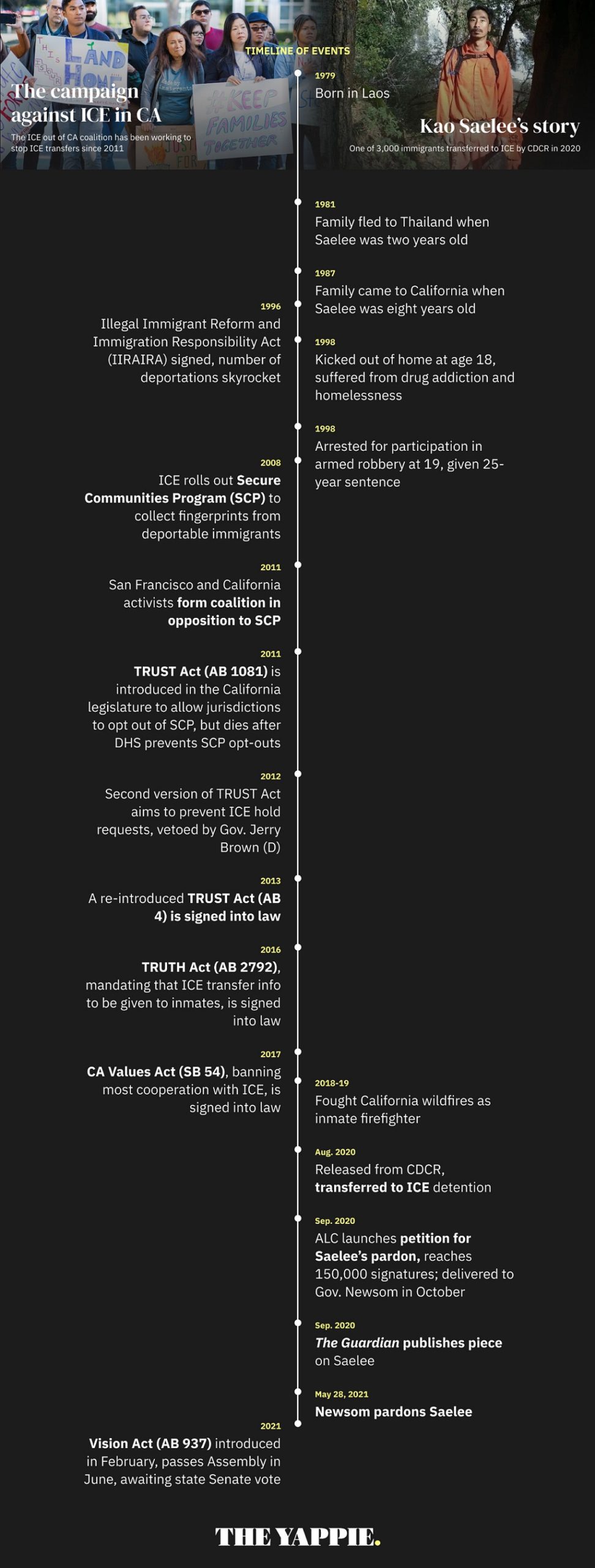

The bigger picture
Though California activists have focused on state and local policy rather than federal immigration law, their work also has national implications.
In 2019, Rep. Jesus G. Garcia (D-Ill.) introduced the New Way Forward Act in the House. If passed, the bill would roll back much of the 1996 Immigration Act, giving immigration judges much greater discretion over individual cases and preventing automatic deportations of convicted immigrants who have been sentenced to less than five years.
The bill garnered 44 co-sponsors but never made it to a vote on the House floor. It was re-introduced in January 2021.
Kham Moua, the director of national policy at SEARAC, doesn’t expect the bill to pass in the 2021-22 legislative cycle. He noted, however, that the support the bill received is an indication of substantial progress.
“The fact that in 2019 the Congressional Asian Pacific American Caucus held a forum on this issue is a huge milestone. And I think the fact that the White House [stated that immigraiton reform is a policy priority for AANHPI communities] is an incredible milestone,” Moua said. “Our hope is to build support here so that we can use it as a jumping off point for the next congressional cycle.”
Though federal and state activism focus on distinct policy issues, federal campaigns “mirror” state and local ones, Moua said.
“New Way Forward was born of the asks and the solutions that we’ve heard from local organizations over the last five to 10 years,” Moua noted.
It’s not yet clear whether activists’ and lawmakers’ policy campaigns have made a significant difference on the national front. The number of removals of Southeast Asians has increased with every administration since 1998, according to Moua. Policy changes and individual advocacy campaigns do not have a straightforward way of measuring quantitative impact, and data for fiscal years 2020 and 2021 is not yet available.
But Moua said that wins in California and other states, including the momentum behind the VISION Act, have been a source of hope for advocates.
For the thousands of convicted refugees in California, the VISION Act would offer not just hope, but concrete protection against the “double punishment” of the criminal justice system and deportation machine, Nourn said.
Nourn herself was incarcerated for 16 years and transferred to ICE upon her release in 2017, where she lived under the threat of deportation until Newsom pardoned her in 2020. If she had not been pardoned, Nourn would have been deported to Cambodia, a place she had never stepped foot in, having been born in a Thai refugee camp.
“Although I'm really grateful that I got pardoned … I want to emphasize [that there are] many people like me who are deserving of the same freedom and ability to thrive, not just to survive or live in fear of being arrested or deported,” Nourn said.
“People are capable of rebuilding their lives after incarceration; we just really need to give them a chance, to support them. Ultimately everybody, after serving their time, should be afforded the opportunity to feel safe, be at home with their loved ones, and be supported, just like anybody else.”
Correction: A previous version of this article incorrectly stated that California Gov. Gavin Newsom signed the VALUES Act into law in 2017. Jerry Brown was state governor at the time.
ACKNOWLEDGEMENTS
Story illustrator: Shannon Lin for The Yappie (Instagram: @shanngens).
This story has been supported by the Solutions Journalism Network, a nonprofit organization dedicated to rigorous and compelling reporting about responses to social problems.
The Yappie is your must-read briefing on AAPI power, politics, and influence. Make a donation, subscribe, and follow us on Twitter (@theyappie). Send tips and feedback to [email protected].





